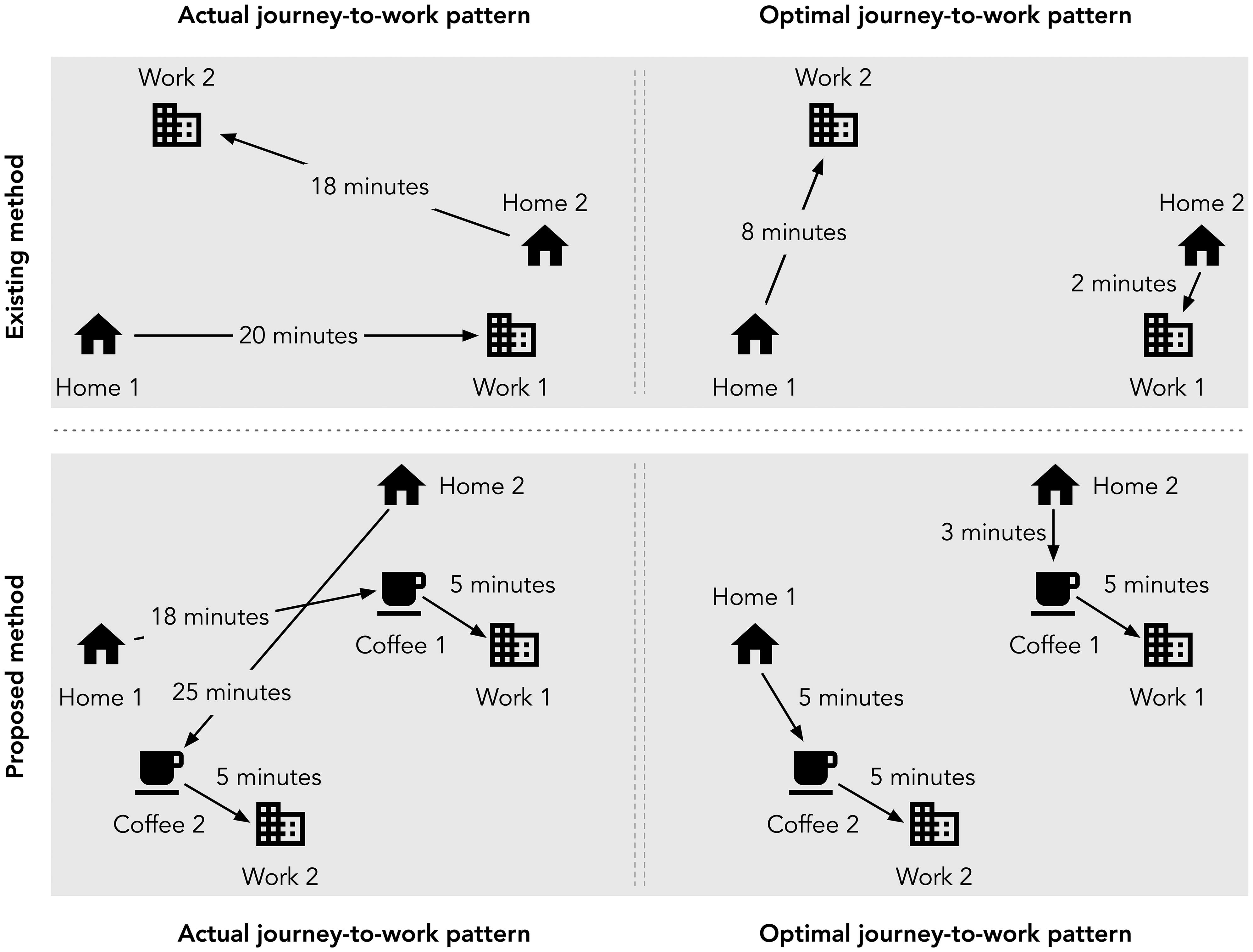
HU – Modeling and Analysis of Excess Commuting with Trip Chains
Yujie Hu, Xiaopeng Li
Article first published online: 04 JAN 2021 Annals of the American Association of Geographers
DOI: 10.1080/24694452.2020.1835461
ABSTRACT: Commuting, like other types of human travel, is complex in nature, such as trip-chaining behavior involving making stops of multiple purposes between two anchors. According to the 2001 National Household Travel Survey, about half of weekday U.S. workers made a stop during their commute. In excess commuting studies that examine a region’s overall commuting efficiency, commuting is, however, simplified as nonstop travel from homes to jobs. This research fills this gap by proposing a trip-chaining-based model to integrate trip-chaining behavior into excess commuting. Based on a case study of the Tampa Bay region of Florida, this research finds that traditional excess commuting studies underestimate both actual and optimal commute and overestimate excess commuting. For chained commuting trips alone, for example, the mean minimum commute time is increased by 70 percent from 5.48?minutes to 9.32?minutes after trip-chaining is accounted for. The gaps are found to vary across trip-chaining types by a disaggregate analysis by types of chain activities. Hence, policymakers and planners are cautioned with regards to omitting trip-chaining behavior in making urban transportation and land use policies. In addition, the proposed model can be adopted to study the efficiency of nonwork travel.
Read the full publication at Annals of the American Association of Geographers